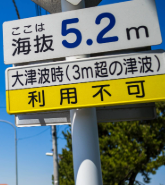It was back in 2009 that the inhabitants of northern Oklahoma first noticed the vibrations. Initially only once or twice a year, but then every month, and even every week. It was disconcerting rather than damaging until November 2011, when a magnitude 5.6 earthquake broke beneath the city of Prague, Okla., causing widespread damage to chimneys and brick veneer walls, but fortunately no casualties.
The U.S. Geological Service had been tracking this extraordinary outburst of seismicity. Before 2008, across the central and eastern U.S., there were an average of 21 earthquakes of magnitude three or higher each year. Between 2009-2013 that annual average increased to 99 earthquakes in Oklahoma alone, rising to 659 in 2014 and more than 800 in 2015.

During the same period the oil industry in Oklahoma embarked on a dramatic expansion of fracking and conventional oil extraction. Both activities were generating a lot of waste water. The cheapest way of disposing the brine was to inject it deep down boreholes into the 500 million year old Arbuckle Sedimentary Formation. The volume being pumped there increased from 20 million barrels in 1997 to 400 million barrels in 2013. Today there are some 3,500 disposal wells in Oklahoma State, down which more than a million barrels of saline water is pumped every day.
It became clear that the chatter of Oklahoma earthquakes was linked with these injection wells. The way that raising deep fluid pressures can generate earthquakes has been well-understood for decades: the fluid ‘lubricates’ faults that are already poised to fail.
But induced seismicity is an issue for energy companies worldwide, not just in the South Central states of the U.S.. And it presents a challenge for insurers, as earthquakes don’t neatly label themselves ‘induced’ and ‘natural.’ So their losses will also be picked up by property insurers writing earthquake extensions to standard coverages, as well as potentially by the insurers covering the liabilities of the deep disposal operators.
Investigating the Risk
Working with Praedicat, which specializes in understanding liability risks, RMS set out to develop a solution by focusing first on Oklahoma, framing two important questions regarding the potential consequences for the operators of the deep disposal wells:
- What is the annual risk cost of all the earthquakes with the potential to be induced by a specific injection well?
- In the aftermath of a destructive earthquake how could the damage costs be allocated back to the nearby well operators most equitably?
In Oklahoma detailed records have been kept on all fluid injection activities: well locations, depths, rates of injection. There is also data on the timing and location of every earthquake in the state. By linking these two datasets the RMS team was able to explore what connects fluid disposal with seismicity. We found, for example, that both the depth of a well and the volume of fluid disposed increased the tendency to generate seismic activity.
Earthquakes in the central U.S. are not only shallow and/or human-induced. The notorious New Madrid, Mo. earthquakes of 1811-1812 demonstrated the enormous capacity for ‘natural’ seismicity in the central U.S., which can, albeit infrequently, cause earthquakes with magnitudes in excess of M7. However, there remains the question of the maximum magnitude of an induced earthquake in Oklahoma. Based on worldwide experience the upper limit is generally assumed to be magnitude M6 to 6.5.
Who Pays – and How Much?
From our studies of the induced seismicity in the region, RMS can now calculate the expected total economic loss from potential earthquakes using the RMS North America Earthquake Model. To do so we run a series of shocks, at quarter magnitude intervals, located at the site of each injection well. Having assessed the impact at a range of different locations, we’ve found dramatic differences in the risk costs for a disposal well in a rural area in contrast to a well near the principal cities of central Oklahoma. Reversing this procedure we have also identified a rational and equitable process which could help allocate the costs of a damaging earthquake back to all the nearby well operators. In this, distance will be a critical factor.
Modeling Advances for Manmade Earthquakes
For carriers writing US earthquake impacts for homeowners and businesses there is also a concern about the potential liabilities from this phenomenon. Hence, the updated RMS North America Earthquake Model, to be released in spring 2017, will now include a tool for calculating property risk from induced seismicity in affected states: not just Oklahoma but also Kansas, Ohio, Arkansas, Texas, Colorado, New Mexico, and Alabama. The scientific understanding of induced seismicity and its consequences are rapidly evolving, and RMS scientists are closely following these developments.
As for Oklahoma, the situation is becoming critical as the seismic activity shows no signs of stopping: a swarm of induced earthquakes has erupted beneath the largest U.S. inland oil storage depot at Cushing and in September 2016 there was a moment magnitude 5.8 earthquake located eight miles from the town of Pawnee – which caused serious damage to buildings. Were a magnitude 6+ earthquake to hit near Edmond (outside Oklahoma City) our modeling shows it could cause billions of dollars of damage.
The risk of seismicity triggered by the energy industry is a global challenge, with implications far beyond Oklahoma. For example Europe’s largest gas field, in the Netherlands, is currently the site of damaging seismicity. And in my next blog, I’ll be looking at the consequences.







